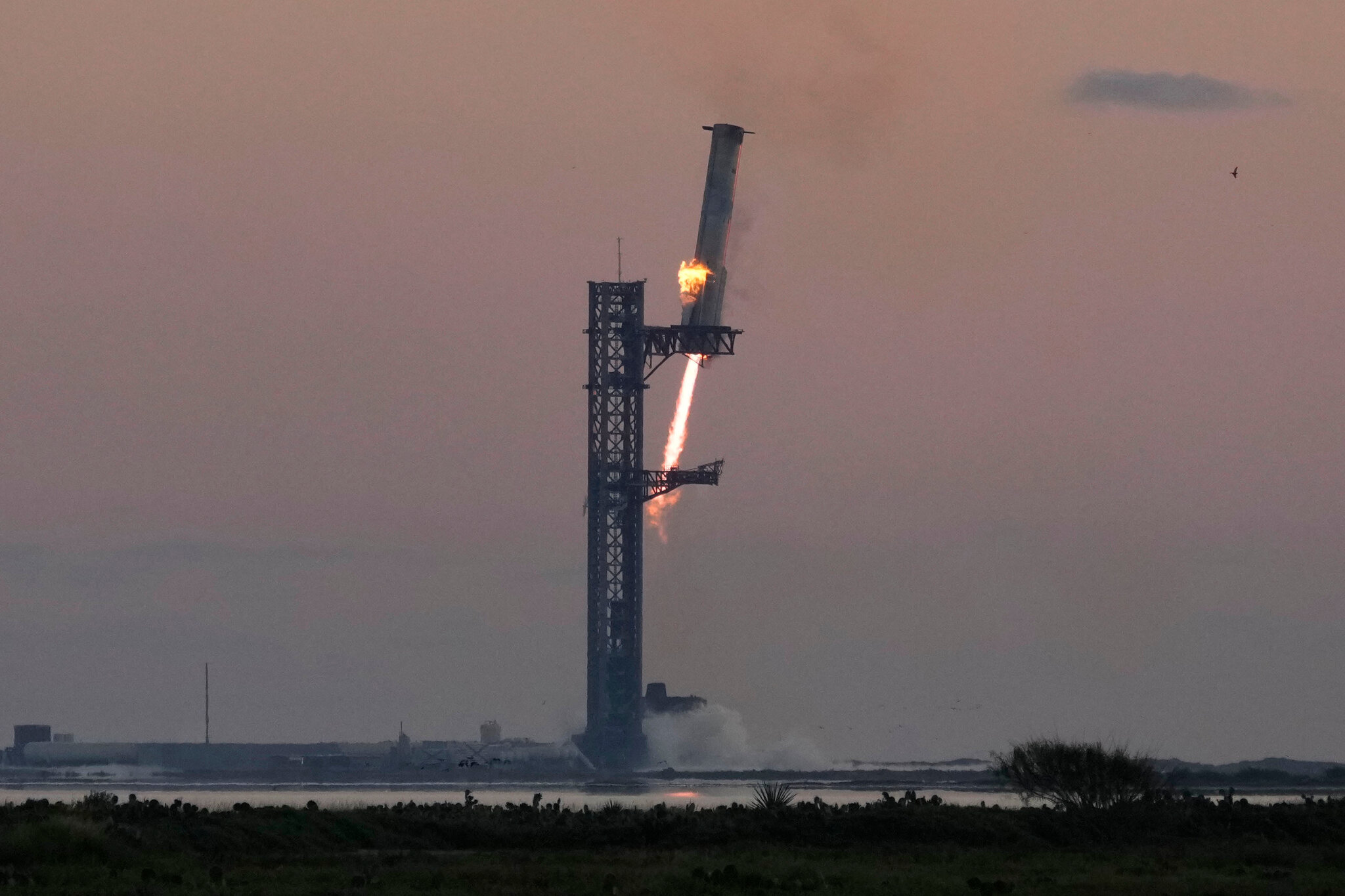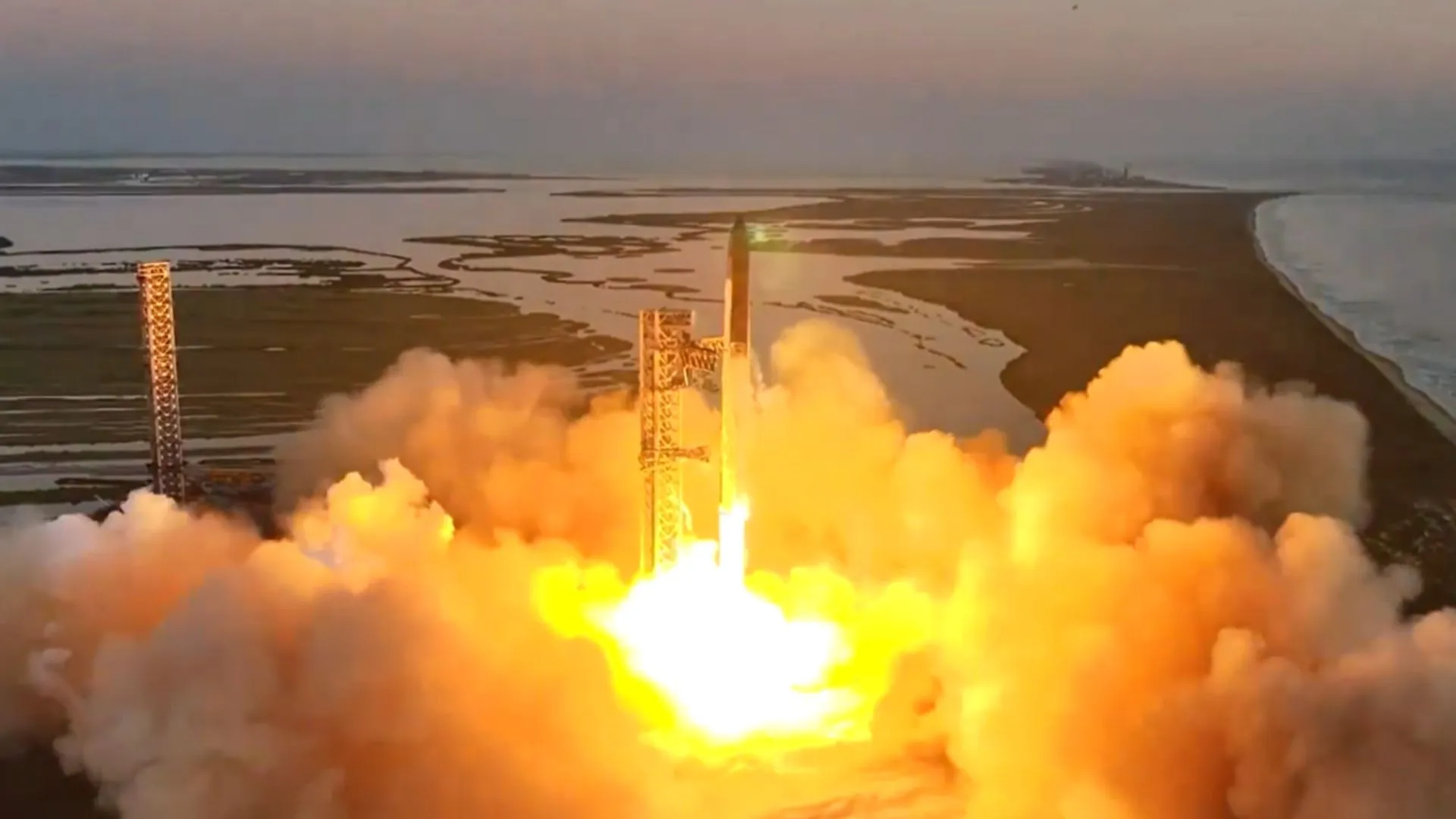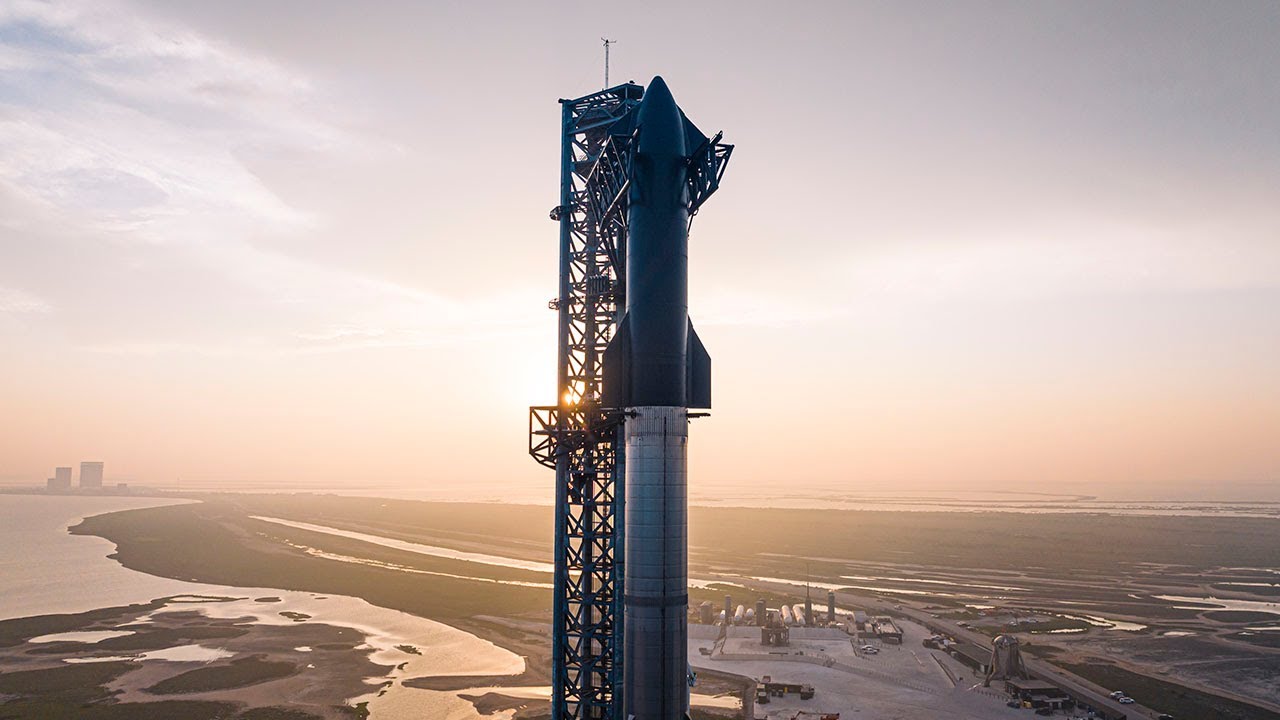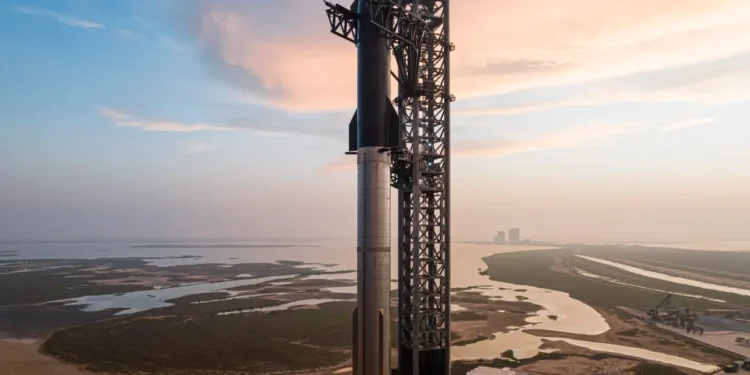On an early Sunday morning, as the sun rose over the Boca Chica horizon, SpaceX’s ambitious Starship program notched another significant achievement. In its fifth test flight, the towering “Super Heavy” first-stage booster of the rocket made a spectacular return to the launch pad. This event marked the first successful attempt to secure the booster using giant mechanical arms—a novel engineering feat aimed at making space travel more sustainable. A Flight Toward Reusable Space Travel
The journey began at 7:25 a.m. CT, when the Super Heavy booster roared to life, lifting the second stage of the Starship rocket toward the fringes of space. After reaching an altitude of approximately 70 km (about 40 miles), the booster separated and began its descent back to Earth, targeting the very pad it had launched from. This phase of the flight was critical as it involved re-igniting three of its 33 Raptor engines to slow its descent dramatically.
The precision involved in this manoeuvre was staggering. The booster had to navigate back to a launch tower, fitted with two large metal arms designed to catch the returning rocket. This tower, standing over 400 feet tall—taller than the Statue of Liberty—served as a mechanical nest for the returning booster.

Elon Musk Celebrates the Success
In a moment of triumph, SpaceX CEO Elon Musk announced on X, “The tower has caught the rocket!!” This was followed by a burst of applause from SpaceX engineers who had been monitoring the flight. The successful catch not only demonstrated an impressive feat of precision and engineering but also marked a significant step forward in SpaceX’s development campaign for a fully reusable rocket system.
The booster’s safe landing is part of a broader goal to enhance the efficiency and frequency of space missions. By reusing rockets, SpaceX aims to reduce the cost of space travel, making it more accessible and frequent. This technology is crucial for ambitious future missions, including transporting cargo into orbit and carrying humans to the moon and Mars.

A Spectacular Show in Space
Meanwhile, the Starship’s second stage continued its journey at approximately 17,000 miles per hour, soaring to an altitude of 89 miles. Its destination was near the western coast of Australia in the Indian Ocean, where it demonstrated a controlled splashdown about 90 minutes into the flight.
As the Starship re-entered Earth’s atmosphere, onboard cameras captured the intense conditions it faced—superhot plasma enveloped the spacecraft, creating a pinkish-purple glow around its steering flaps. The spacecraft, equipped with 18,000 improved heat-shielding tiles, showcased its enhanced durability compared to previous tests.
Despite a dramatic end to its mission with a fiery explosion near the splashdown site—a spectacle that remains under analysis whether it was a controlled detonation or an unplanned event—Musk confirmed the landing was “precisely on target.” This continued a pattern of explosive endings in the Starship’s test history, which despite the setbacks, have provided invaluable data to refine the spacecraft design.

Looking Forward: SpaceX and the FAA
This test flight came on the heels of a freshly issued launch license by the U.S. Federal Aviation Administration, which underscored ongoing dialogues and tensions over the pace and safety of SpaceX’s innovations. Each successful test serves to solidify SpaceX’s credentials in overcoming bureaucratic and technical challenges.
As SpaceX continues to push the boundaries of what’s possible in aerospace technology, the world watches closely. Each flight brings us one step closer to a future where space travel is as routine as air travel, potentially changing the course of human civilization forever.










